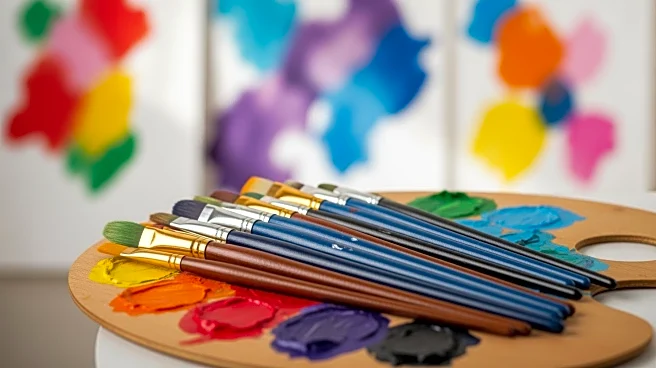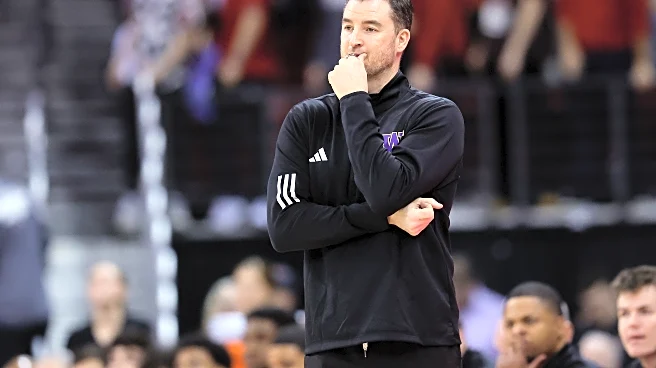What's Happening?
The Clyfford Still Museum in Denver has unveiled a new exhibit titled 'Tell Clyfford I said Hi,' which is uniquely curated by children from the Colville Confederated Tribes. This initiative involved collaboration
between the museum staff and the children, providing them with an opportunity to engage with art and contribute to the museum's offerings. The exhibit aims to showcase the perspectives and creativity of young minds, highlighting their interpretations and connections to the works of Clyfford Still, a renowned abstract expressionist artist. This approach not only enriches the museum's collection but also fosters cultural exchange and understanding.
Why It's Important?
This exhibit is significant as it represents a novel approach to art curation, involving young voices and indigenous perspectives. By engaging children from the Colville Confederated Tribes, the museum is promoting inclusivity and diversity in the arts. This initiative can inspire other cultural institutions to explore similar collaborations, potentially leading to broader representation and understanding of different communities in the art world. It also provides the children involved with a platform to express their cultural heritage and personal insights, contributing to their development and empowerment.
What's Next?
The success of this exhibit could encourage the Clyfford Still Museum and other institutions to continue involving diverse groups in curatorial processes. Future exhibits might expand to include more collaborative projects with different communities, fostering a more inclusive environment in the arts. Additionally, the museum may consider educational programs or workshops that further engage young people and indigenous groups, enhancing their involvement in the arts and cultural sectors.
Beyond the Headlines
This initiative highlights the ethical dimension of representation in the arts, emphasizing the importance of including voices from marginalized communities. It challenges traditional curatorial practices and encourages a shift towards more participatory and inclusive models. Long-term, this could lead to a transformation in how museums and galleries operate, prioritizing community engagement and cultural diversity.














